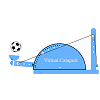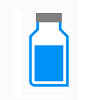
About this course
The objective of the catapult is to launch a projectile that can hit the enemy located at a specific distance - hence the primary metric for this device is to achieve a given distance with minimum variation. A scale-model catapult has become a useful tool for simulating process variation and the impact of process variables on process output. There are 8 variables you can control on the catapult plus 2 operator settings to influence the outcome. The output from this exercise is the distance of the point of impact of the ball from the front of the catapult. Some of the 10 variables may have little or no impact, some variables may have a medium impact and some may have a large impact on the distance achieved.
This simulation can be used as either an individual or a team exercise to learn the various statistical concepts covered in a typical Lean Six Sigma training class. You can use the catapult to collect data and analyze the data to understand concepts such as measurement systems analysis, capability analysis, control charts, hypothesis testing, correlation, regression, design of experiments, Taguchi robust design, and a lot more.
Pre-requisites
There are no specific pre-requisites for this course.
Estimated Time
The duration of this activity depends on the amount of data you need to collect and the type of analysis you are going to perform and hence can range from 30 minutes to 2 days.

About this course
Modern pharmaceutical and biotechnology products require efficient and flexible methods to fill sterile injectables in vials, syringes, and cartridges. The equipment must be flexible to handle vials in various capacities. The liquid vial filler machine fills liquid into the vial and then adds a rubber stopper. The vial filler machine receives sterile vials through a conveyor belt. Special sensors are mounted to ensure that no vial, no filling condition is achieved. The filling process is achieved through the syringes and nozzles. After the filling process, the vials are sealed using a rubber stoppering system and finally, the vials exist after sealing.The primary outputs from this equipment are the time to fill the vials and the fill quantity achieved. The control variables that can be adjusted by the designers are the filling pressure differential (delta P), length of the syringe (L), the diameter of the syringe (D). The variables that are specified by the customer (and fixed for your analysis) are the diameter of the vial, the volume of the liquid to fill in the vial, and the viscosity of the sterile liquid used.
Pre-requisites
There are no specific pre-requisites for this course.
Estimated Time
The duration of this activity depends on the amount of data you need to collect and the type of analysis you are going to perform and hence can range from 30 minutes to 8 hours.